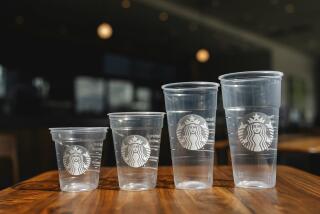Starbucks in space? Scientists help astronauts drink coffee
- Share via
How do you take your coffee? In a cup?
That’s the dilemma facing astronauts needing their caffeine fix in space. The almost-zero-gravity environment makes pouring hot coffee into a cup a dangerous task, said Mark Weislogel, who studies fluid dynamics at Portland State University (and whose faculty profile photo bears an uncanny resemblance to another college professor). It may be hard to get the coffee to move, let alone go into your cup.
Working with much more important fluids, such as fuel and water, is essential to establishing a permanent human presence in space. But fluids behave in a very different way outside of Earth’s atmosphere.
“There’s no top, no bottom, no up and down, no sideways,” Weislogel said in between communication with the astronauts at the International Space Station, who carry out his various experiments.
Watch: Astronaut wrings out washcloth in space, and it’s stunning
One of those experiments was to design a coffee cup for astronauts. The key to dealing with minimal gravity is capillary action, in which liquids move through a confined space against gravity (or in the absence of it). Think of water moving between the hairs of a paintbrush. The liquid’s surface tension and the adhesive forces between the solid and liquid provide the mechanism for capillary action.
Drawing on this principle, Weislogel and colleagues, including a team of mathematicians, designed a cup with a sharply angled interior corner. Positioned correctly with your lips, the coffee travels along the corner via capillary action and into your mouth. Weislogel got astronaut Don Pettit to try it out aboard the space station, making it the first patent brought to practice in orbit, he said.
Now to add sugar…
Return to Science Now.
Follow on Twitter: @BradBalukjian






